#mid jurassic period
Text
Dinofact #62
All known pachycepahlosaurs, except for two species, Ferganocephale and Stenopelix lived during the late Cretaceous. Ferganocephale, which can be traced back to the middle Jurassic, lacks some features on its teeth distinctive to all other known pachycephalosaurs, and Stenopelix, traced to the early Cretaceous, is based on a partial skeleton lacking the skull, which some scientists have now reclassified as a ceratopsian. With both outlying species of pachycephalosaurs sometimes considered nomen dubiums, it is possible that all known pachycephalosaurs lived during the late Cretaceous period.
Source: Wikipedia [1], [2], [3]
#dinosaur#dinosaurs#paleontology#pachycephalosaur#pachycephalosaurs#pachycephalosauria#ferganocephale#stenopelix#cretaceous#late cretaceous#cretaceous period#late cretaceous period#early cretaceous#early cretaceous period#jurassic#jurassic period#middle jurassic period#middle jurassic#mid jurassic#mid jurassic period#nomen dubium#fun facts#trivia#dinosaur trivia#dinosaur fun facts#26th#october#2022#october 26th#october 2022
11 notes
·
View notes
Text
With forest fire season approaching, I decided it was time to take matters into my own hands. Last year, I was trapped inside, wondering why everything tasted like I was eating it at a mid-tier barbecue joint. This year, my plan was to invent some kind of machine that absorbs the forest fire smoke and turns it back into trees. I succeeded.
You might not think that such a thing is possible. Doing so is a waste of time that you could be spending inventing your own Teletreeporter. A couple cups of coffee later, and I was driving around an old International truck (watch your feet, the floors are gone) with a prototype stuck to the back of it.
As a test, I chose to start in the smokiest part of town, the old fan factory. Someone left the place running and then locked themselves out years ago, and now the autonomous assembly algorithms are tearing the building apart in order to have enough material to keep manufacturing fans. Nobody has told the robots to stop quality-testing those fans, either, so every single one they build goes out in the parking lot, and runs until destruction. It's a big draw on the local power station, and also kind of ruins the air quality in the area. I flipped the switch, and the Teletreeporter leapt to life, popping out a perfect, not even blackened, elm tree.
And then the switch jammed. In my defence, it was not my fault that I used a junky old switch I found in a cookie tin full of old switches that I got from some dude's estate sale. Sure, I could have tested it more, but who knows if it would have broken just the same? Either way, I was now driving around town, shitting out a constant, unbroken stream of tree sausage.
"Take cover," I shrieked as I drove recklessly past a public park, reforesting it the whole way. "I can't turn it off!" As I got on the throttle and headed towards Main Street, I noticed that the sky was beginning to get brighter and brighter. The damn thing had absorbed all the forest fire smoke and was getting a start on the atmospheric carbon. If I didn't do something soon, it was going to reverse climate change, and start pooping out bricks of solidified gasoline.
"Goddammit! Stop fixing the climate," shrieked a cop, fumbling for his gun. His threat came too late. He got creamed by a thick stream of authentic ground Brontosaurus meat, brought back to "life" by the reversion of the Jurassic period's extinction event.
211 notes
·
View notes
Text
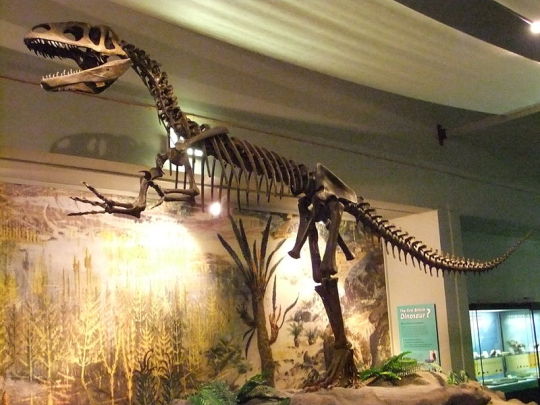

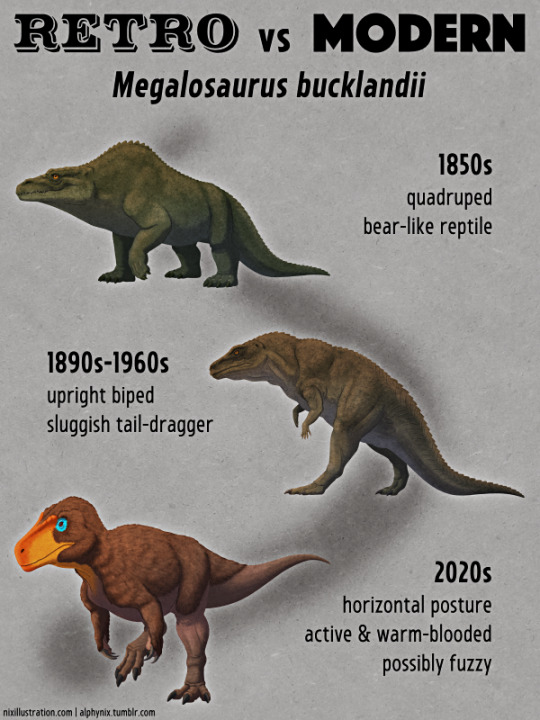

Happy 200th birthday Megalosaurus! Megalosaurus is an extinct genus of theropod dinosaur which lived throughout what is now Europe during the middle Jurassic period some 174 to 163 mya. Although it now only exists in drawings what is thought to be the first fragment of Megalosaurus consisting of a partial femur was discovered in 1676 from a limestone quarry in Oxfordshire by professor Robert Plot, who due to the unprecedented nature of the find, declared it to belong to a biblical giant. In 1763 the bone was given the name 'Scrotum humanum' by Richard Brookes, due to the rather crass yet accurate appearance of the end of the bone to a human scrotum. This name/description was never formerly accepted by any scientific body, but did prompt Rev. William Buckland to begin amassing various other remains from that same Oxfordshire quarry including a piece of a right lower jaw, a thigh bone, ribs, some pelvises, a foot bone, and several vertebrae. After years of study Buckland realized that these specimens all belonged to the same species of giant reptile which he named Megalosaurus meaning great lizard on February 20th 1824. Megalosaurus was 1 of 3 genera which Richard Owen used to found the Clade Dinosaur, marking Megalosaurus as the first non avian dinosaur to be formally described. Over the following centuries over 50 species would be classified as Megalosaurus however nearly all have been determined to belong to other taxa, leaving only the original Megalosaurus bucklandi as valid. Reaching around 20ft in length and 1,500lbs in weight megalosaurus was amongst mid-Jurassic Europe’s largest predators. It had a long tail, strong stout legs, a robust body, short yet muscular arms, and large head, equipped with long curved teeth. In life Megalosaurus would have inhabited tropical forests, wetlands, and coastlines feeding upon fish, invertebrates, amphibians, aquatic reptiles, and other dinosaurs in the island chain that at the time constituted Europe.
Art used belongs to the following creators
Megalosaurus: Julius T. Csotonyi
Megalosaurus through the ages: Nix Draws Stuff
Megalosaurs 200th Anniversary: NazRigar
#pleistocene pride#pliestocene pride#mesozoic#jurassic#megalosaurus#dinosaur#paleoart#200thanniversary#megalosaurus 200th birthday
42 notes
·
View notes
Text
Tropius (#357)
Tropius (#357)
Tropius modernus
General Information: Tropius the Fruit Pokémon, this living fossil has been around for a hundred million years, and has been a friend to humanity through that time
Tropius are non-evolving Pokémon that average at 6’7 feet tall (2 M) and 220.5 pounds (100 kg). They are rather bulky Pokémon, but their flying type gives them the ability to use their leafy wings in flight. Still, they are not particularly graceful fliers, and their flight abilities are more function over form.
Habitat: Tropius are an ancient Pokémon that existed before South America and Africa separated completely. While the initial splitting of Gondwana began around 184 MYA, the two sections of the supercontinent would take many tens of millions of years to fully break apart and separate from each other. Early members of Tropiusaurus emerged from the Sauropods during the Mid-Jurassic period (174-163 MYA), where they spread across Gondwana. Records indicate migrations between the land masses for millions of years as Tropius populations steadily split with the diverging lands, but their flight kept their populations interbreeding for countless generations and even across the Atlantic Islands that developed between Africa and South America during these times. Of course, there were other species of Tropiusaurs during this time period, but the metapopulation remained cohesive for millions of years until it steadily became less and less feasible for Tropiuses to make trans-Atlantic migrations to other lands.
Because of this incredibly long history, and Tropiuses remaining largely the same throughout time, these living fossils can be found in the tropical regions of South America, Central America, and Africa, as well as the assorted tropical islands of the Atlantic Ocean.
Life Cycles: Tropius live for many decades under optimal conditions, living well into their 40s and 50s in the wild. They are megafauna by our standards, though tiny compared to Tropiusaurs of the past. These huge creatures reproduce every other year from an egg that takes ages to develop and hatch. They will mate during the dry season (if applicable) of one year, and inside their bodies steadily gather the energy needed to create an egg during the rainy season, the egg is laid during the following dry season, and it hatches in the rainy season. If such seasonal distinctions do not exist, then the Tropius simply mates at random in a 2-3 year cycle.
These babies take two years to emerge after mating, but they emerge fully formed and capable of flight with no early stage to hinder themselves. Of course there is parental care, for Tropius are communal creatures who care for their young and prefer to exist in groups that work together.
Tropius are at the greatest risk of predation during the first two years of its life, when they are smaller and less able to handle the world around them. The main things that eat Tropius are leopards and jaguars.
A Tropius becomes reproductively mature around 10 years old (and, of course, it is at least level 15), and is able to have offspring until its death.
Behavior: Tropius live in family groups called herds or “forests.” These groups range anywhere from a handful to many dozens of Tropiuses. In general, it is the males that will leave for other herds, often even forming many bachelor herds, but this is not a hard rule. Their mating rituals are complex, involving a lot of necking, singing, and displays of strength and agility.
Tropius are known to be migratory creatures who fly to other areas in search of seasonal foods or in search of other herds.
During the flowering season of their homes, Tropiuses will shake their necks to spread the spores of their favorite fruit, helping to pollinate them.
Diet: Tropius eat fruit and absorb sunlight through their big leafy wings. They will implant their favorite fruit, usually a type of banana, as a seed onto their necks where they then grow the fruit directly from their necks. These fruit are then fed to baby Tropius, though many Pokémon will consume them without harm to the Tropius.
Their sociality makes them excellent companions to humans!
Conservation: Least Concern. They are numerous, hardy Pokémon that have managed to survive many changes to the planet, and are not in danger of extinction anytime soon.
Relationship with Humans: Tropiuses have existed in some form for far longer than humans and our primate ancestors have walked the earth. Our ancestors have eaten the fruit of Tropius since time immemorial. They have historically been large creatures of the forest that many smaller creatures and Pokémon could seek protection through. They were protection from leopards and other predators, and they sometimes provided fruit. While it’s hard to say what the Tropiuses got out of these relationships, if anything, they certainly aren’t harmed by them in the modern day.
In paleolithic times, Tropiuses were likely hunted by ancient humans as we ate most things that we could catch, but our co-evolutionary history with them means that Tropiuses are wise to our ways and thus, like the rest of the African megafauna, did not go extinct.
In modern times, Tropiuses are seen as the gentle giants of the jungle, who’s fruit are edible and who yield no danger to humans so long as we do not bother them. There are farmers who raise Tropiuses specifically for their exceptional neck fruits, and children in particular love these fruits. Tropius are excellent around human children and are a quintessential aspect to the lives of humans in the tropics of Central/South America and Africa.
Additionally, there is a cereal brand called Tropius Fruit with a Tropius mascot (“Kids love Tropius!”), and it’s a banana-flavored cereal shaped into bananas with Tropius-head marshmallows.
Classification: Tropius have the species name Tropius modernus. Interestingly, they are not the only species of Tropiusaurs alive, but certainly the least derived from their ancestral state. Meganium is part of the Tropiusaurs, though a species that lost its wings and evolved to develop neck flowers instead of neck fruit. This split likely occurred tens of millions of years ago.
~~~~~~~~
Hey guess what, if you like my stuff, this is my website where you can find other Pokémon I've written on and more information about the game that I’m slowly making! Check it out! I write books sometimes too.
#tropius#tropiusaur#tropiusaurus#meganium#pokemon#pokemon biology#pokemon irl#pokemon biology irl#pokemon tabletop#pokemon biology irl tabletop#tabletop homebrew#tabletop#ttrpg#homebrew#gen 3 pokemon#pokemon gen 3#pokemon ruby and sapphire#pokemon emerald#pokemon ruby sapphire and emerald#pokemon RSE#Pokemon ORAS#rse
5 notes
·
View notes
Text
Interesting Statistic
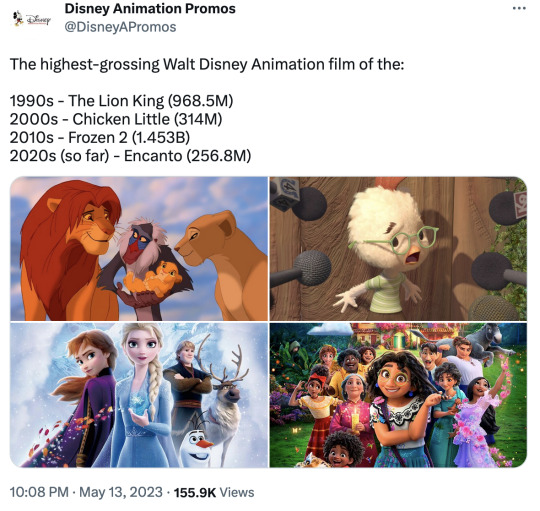
Tweeted by Disney Animation Promos...
Before I start, I'll point something out here.
THE LION KING didn't gross nearly a billion dollars back in 1994-early 1995. That full total, which you can find on BoxOfficeMojo and various other sites, is made up of the original release (which itself stopped and re-started at one point), the 2002 IMAX-only re-release, and the 2011 3D re-release. The original 1994/95 take was around $768m, approximately... Which is still a monster total, and held the record for highest-earning animated movie until 2003, when Pixar's FINDING NEMO took the crown.
It's almost kind of... Rhythmic, in a way...
1990s... Movie that made $700m. 2000s, a movie that made little over... $300m... 2010s, big billion dollar hit and one of the highest grossing movies of all-time... 2020s... A movie that coughed up around $250m...
Wanna go back further? 1980s... Obviously, the biggest Disney animated feature at the box office - not counting any re-release totals - was THE LITTLE MERMAID, which made around $183m at the worldwide box office. That was an unprecedented total for an all-animated feature back in the day. Hybrid movie WHO FRAMED ROGER RABBIT, a year and a half earlier, collected $329m worldwide. That same year, Don Bluth and Steven Spielberg's THE LAND BEFORE TIME made $84m worldwide, while the full worldwide total for Disney's OLIVER & COMPANY - released the same exact as the Bluth dino movie - has never been disclosed. The domestic take was $53m, a record at the time... LITTLE MERMAID was a big jump up from OLIVER and LAND BEFORE TIME... And things only got bigger and bigger, as evidenced by THE LION KING making over $700m worldwide. Animated movies in the mid-1990s were now sharing the big leagues with blockbusters like TERMINATOR 2: JUDGMENT DAY and JURASSIC PARK, but also leggy sensations like FORREST GUMP.
The 1970s is where things get muddy, given limited box office data - especially worldwide data... But I *do* know that THE RESCUERS was the biggest at the time, and that the domestic take was somewhere around $16m. Nowhere near that top ten of 1977, for sure... Hey, did you know that THE RESCUERS was *massive* in Europe? Like, so massive, that it outgrossed STAR WARS that same year in both France and West Germany? That's wild, isn't it? A fairly slow-paced, slow-burn mystery movie with two mice made on a tight budget, beating out the big spectacle that redefined the escapist blockbuster landscape and the family film as a whole? French folk and Germans not trapped inside by the Iron Curtain seemed to feel so... France and West Germany always seemed to come to the rescue with Disney during the 1970s. The movies that did okay-ish over here, like THE ARISTOCATS and ROBIN HOOD, were blockbusters over in those territories. The secret weapon that kept Disney's animation division afloat during a period where it was in the danger of being shut down, and a period where it wasn't easy to convince Americans other than families and children to go see a Disney animated movie in the cinema.
Anyways, some context for the 1990s vs. the 2000s vs. the 2010s vs. this decade...
We all know the story. The '90s was the "Disney Renaissance", a mostly fruitful period where they came back with a wallop, and scored some of their most successful animated movies since the final years Walt Disney himself was among the living. THE LITTLE MERMAID proved to be Disney's biggest animated domestic hit in a long while, in terms of attendance, and did excellently worldwide. BEAUTY AND THE BEAST, ALADDIN, and THE LION KING built upon that success, big time.
But then the grosses dwindled. Some audiences caught onto Disney kind of reusing the same musical comedy-adventure formula with each movie (such as with movies like HERCULES and MULAN), and some were turned off by what they felt was the studio biting off way more than they could chew (the misguided ambitions of POCAHONTAS and the darker but tonally all-over-the-map THE HUNCHBACK OF NOTRE DAME). That said, Disney continued to score box office successes, take home some Oscars even (largely for musical categories), and get decent to good enough critical reception for most of the post-LION KING/pre-FANTASIA 2000 movies. By the time Disney switched it up with the genres, such as doing a zany buddy comedy with THE EMPEROR'S NEW GROOVE, action-adventure with ATLANTIS: THE LOST EMPIRE, and space opera with TREASURE PLANET... It was too late.
Those three movies came out in the early 2000s, a period when all-computer animated movies like Pixar's films and DreamWorks/PDI's spectacles were wowing audiences everywhere, and it also helped that the stories they were telling weren't the musical comedy-adventure romps that Disney Animation kept offering with each new movie. Pixar had buddy comedies TOY STORY 1 & 2, and Western-themed adventure A BUG'S LIFE, inventive workplace comedy MONSTERS, INC., and the perilous ocean adventure FINDING NEMO. PDI had the very PG ANTZ, and the very snarky and equally very farty SHREK. Audiences weren't moved by the trailers for movies like NEW GROOVE, ATLANTIS, and TREASURE PLANET... And they similarly ignored films like THE IRON GIANT, THE ROAD TO EL DORADO, and SPIRIT: STALLION OF THE CIMARRON. Beautifully hand-drawn movies, even if they changed up the stories a bit, just seemed same ol' same ol' to audiences. Throw a movie like SHARK TALE in front of them in 2004? Boom, big hit. As long as you were CG, competently made, and had some kind of edge, you were good to go in the early 2000s.
Hence why CHICKEN LITTLE of all things is the highest-earning Disney animated movie of the 2000s, if we’re excepting the hybrid collaboration film DINOSAUR, which only made about $20-something million more. This rather maligned 2005 movie even outgrossed the beloved LILO & STITCH, which made around $267m at the worldwide box office. That was a movie that had an enormous second life on DVD, and there was a brief Stitch-mania of sorts from around 2003-2006. A period where he was *everywhere*, to the point where he was as ubiquitous as Mickey, Donald, and Goofy... I was there, and I remember getting kinda tired of that little blue renegade, despite that I liked him and his movie. Very similar to how Disney aggressively shoved FROZEN front and center following its out-of-nowhere home run success, and trying to keep up with the demand for a movie they supposedly had muted confidence in when they were releasing it.
So the first half of the 2000s for Disney Animation was one 2D movie that did fine, and a bunch of movies that just didn't cut it. Even BROTHER BEAR, which made back its small East Coast budget, made $250m worldwide. That's a fine number, but when FINDING NEMO made $870m earlier that year... Yeah, things weren't looking great. Disney Animation switched to making all-CG movies, and while CHICKEN LITTLE made the most money of the pack, it was still pretty below what Pixar and DreamWorks racked up. MEET THE ROBINSONS was dumped, and BOLT was given a ho-hum release and consequently it just didn't make all that much for a 2008-release animated movie. THE PRINCESS AND THE FROG ended the 2000s with a whimper, a 2D animated movie... and it sadly and predictably made less than $300m worldwide... and CG TANGLED, arriving one year later and starting off the 2010s for WDAS, collected nearly $600m worldwide.
The 2010s, with the exception of the 2D animated and left-for-dead WINNIE THE POOH, was like the 1990s. Hit after hit. WRECK-IT RALPH, FROZEN, BIG HERO 6, ZOOTOPIA, MOANA, a pair of sequels, etc. Oscars, too. Good critical reception. They were back to being a well-oiled hit machine that would've likely continued into this decade, if not for COVID-19 and the whole cinema landscape being upended...
The 2020s... The world shutting down, and the re-opening being very unpredictable before the release of a vaccine... Plus The Walt Disney Company also had a very sloppy CEO running the joint. Unlike Universal, who either waited things out (like delaying MINIONS Deux by two full years, and wound up with a monster gross for that movie) or tried experimental strategies with other movies (such as the strategy they tried for THE CROODS: A NEW AGE), Disney kind of screwed the pooch with many of their animated releases...
Disney largely seemed to be using WDAS' movies, and Pixar's movies too, more as a carrot to get people to subscribe to Disney+ during this lull period. And I will be fair, RAYA AND THE LAST DRAGON debuted before the vaccines really got out. That was in March 2021. I was 28 at the time, and didn't get my second Moderna jab until two months later. It was available for the elderly first, then middle-aged adults, then folks my age, then later teens and children. Maybe not the most ideal time to release a family movie, no matter what the strategy was. When I started going back to the movies in spring 2021, I didn't really order snacks much, I wore my mask when in the lobby. When Delta was cropping up, I kept my mask on, even in the auditorium. Omicron, I was back to working at said movie theater, so I was masked when with customers and out of the break room...
I still hold that, because WDAS and Pixar's films are so goddamn expensive... that they should've held some of them like how Universal did with MINIONS: THE RISE OF GRU... At the same time, they did need something to release... So I understand their RAYA strategy, and ENCANTO was to get a month-long theatrical run but Delta happened, and it being on Disney+ in a matter of weeks probably conditioned audiences who knew of its existence to wait. (When I saw ENCANTO on a weekday, two or so weeks into release, maybe 4 other people were in the auditorium with me?) ENCANTO was deus-ex-machina'd by just how well it did on Disney+ and how incredibly well the soundtrack did. Not a box office hit, but huge in the second life. It's strangely a tradition for Disney animated movies... PINOCCHIO, FANTASIA, BAMBI, ALICE IN WONDERLAND, SLEEPING BEAUTY, etc. All flops on their initial releases, big favorites afterwards...
By the summer of 2022, audiences had fully returned to cinemas, and not just for Marvel movies. MINIONS 2 made nearly a billion, and there were other big hits in TOP GUN: MAVERICK, JURASSIC WORLD DOMINION, and SONIC THE HEDGEHOG 2. Animated movies like THE BAD GUYS and DC LEAGUE OF SUPER-PETS did quite well, but were lower budgeted, so their grosses made the grade. Did Disney take advantage of this resurgence for their 2022 WDAS offering? No... They just straight up left STRANGE WORLD for dead, they let it wither on the vine. Poor test screenings drove that decision, and audiences who did see it on opening week... gave it sour grades, too. Sometimes I wonder, what if RAYA came out in fall 2021, and ENCANTO this past fall? Could've been a blockbuster, pre-Disney+...
Just a sticky situation all around that could've been handled differently. Two movies impacted by how things were going in the world, and another that they straight up lost faith in...
Now it is mid-2023. Cinemas are very much alive and well, animation is benefiting from it, too... but audiences aren't made of money, so choices are narrower than ever before. WISH, along with the other not-sequel movies WDAS is making and releasing this decade, have an uphill battle to face. It's no surprise that ZOOTOPIA 2 and FROZEN III are in the works, partially because they're easy hits. Franchise favorites. They'll probably single-handedly make back the money RAYA, ENCANTO and STRANGE WORLD lost as theatrical titles. Expect at least another sequel to come out before 2030, likely a second ENCANTO. It's also no surprise that WISH is being marketed and positioned as this "definitive" Disney film, and being previewed as a sort-of "origin story" for all fantastical Disney animated movies. The teaser has a silly title card that says it was a story "centuries in the making"... They really want and need this thing to be their first bona fide box office success since... 2019's FROZEN II... And omitting sequels, since 2016's MOANA... Damn!
And I certainly hope it does well, it seems like the kind of movie that *would* come to the rescue when things aren't looking too hot. It's why I'm really curious to know what's after WISH, as in... Movies that aren't ZOOTOPIA 2 and FROZEN III, both of which seem to be deep in development and quite a while away. STRANGE WORLD's failure stung me because it happens all too often when Disney Animation tries on clothes that it doesn't normally wear in the post-Walt era. Like ATLANTIS, TREASURE PLANET, and MEET THE ROBINSONS before it, a sci-fi-flavored adventure movie with no musical numbers went belly-up. On the other side of the coin, Disney Animation - this past decade - scored hits with the video game adventure WRECK-IT RALPH, the superhero comedy BIG HERO 6, and the sorta police procedural/48 hours-almost-political conspiracy tale ZOOTOPIA. These balanced out the familiar musical comedy-adventures - TANGLED, FROZEN, and MOANA - quite nicely... So, I do hope that the post-WISH movies still play around and even experiment. I wouldn't want repeats.
With various complications out of the way, they now have to really battle for audience dollars and make the rest of this decade an upswing for them. Especially for leader Jennifer Lee, who assumed the mantle in 2018. Her tenure consisted of two sequels that were locked to do well to begin with, and then a couple of original movies that got affected by a worldwide crisis, and then a movie that was screwed. WISH should be her first not-sequel hit, a movie she apparently co-wrote, too. And a movie directed by her FROZEN partner, Chris Buck. Chris hasn't had a duff film there yet, his TARZAN made its money back in 1999, FROZEN and FROZEN II, need I say more? WISH likely continues his own little hit streak.
How well it does remains to be seen. Maybe a movie that comes out later this year, and not FROZEN III, is the surprise and takes the decade box office crown... Maybe not. Whatever happens, I hope WDAS claws its way out of the COVID-19 mess and keeps up with the other heavies.
12 notes
·
View notes
Text
Watching The Mandalorian S3EIforget, "The Pirate"
Okay, 44 minutes of a show that's rapidly losing my allegiance, not for being offensive or brutal, just for being kind of dumb and palpably losing interest in its title character. Let's go then.
If this show was going to go with pirates while also being addicted to re-introducing characters from the CG TV shows, I really feel they could've graced our screens with Hondo Ohnaka. But I fundamentally don't want them to keep bringing in characters from the CG shows. The only exception I would make is Rex, because Temuera Morrison, but I would rather still have more Boba, because also Temuera Morrison.
They haven't even tried to re-member the dismembered IG-11 statue.
shiny ass-kissing droid
and now there are pirates
and I just feel like a man in Greef's position -
actually speaking of Greef's position, I love how before skyping the mossy pirate captain, he squares up and puts his hands on his hips like Henry VIII posing for Holbein
- okay, a man in Greef's position, formerly deeply involved with the bounty hunters' guild, ought to have a staff of mercenaries on site in readiness for shit like this. Instead he's as unprepared for the possibility of bad guys with a big ship showing up wanting to take his stuff as Boba was on Tatooine. Presenting these middle-aged guys who have been involved in the underbelly of the galaxy for their whole adult lives as so naïve about the security challenges of running one's own fiefdom during a somewhat lawless period of regime change is such a bizarre choice. Why is everyone in this show so dumb about stuff they should be totally used to? They're not Luke Skywalker coming from the middle of nowhere with starry eyes and feathered hair. Like they should be smarter than me at this type of thing, and I'm a typist from Auckland.
there's a PIRATE NATION taking over the Mid Rim? THAT I ACTUALLY AM SEMI-INTERESTED IN so I bet they won't show it.
Retreat to the lava flats - a large, open area without shelter or cover. Super.
exsqueeze me, Disney+ subtitler, but PSYCHEDELIC ROCK MUSIC PLAYING?
well, the krill farmers are still pumping out the blue juice, I see. And here's a nice Korean Canadian dad - you know what? I feel like Captain Teva is here to provide the Papa Smurf beard that Rex is not onscreen to give us.
Okay, so just as apparently Ragnar just hung out in a dinosaur's crop totally uninjured for 12 hours minimum while a search party stopped to rest overnight on their way to him, Mr Kim has time to travel to Coruscant and try to get a meeting with his superiors while Nevarro is under active pirate attack. He doesn't say "screw it, time is of the essence, I'll render aid and take the consequences." This show's idea of time in rescue situations is bizarre.
Who else feels like this fucking boring New Republic plotline was supposed to be part of the Rangers show that presumably Cara Dune would have headed up if the actress hadn't insisted on being a douchebag on Twitter? And now they're just trying to fold it into The Mandalorian. I resent it.
You know, when I heard the name Tuttle I had a brief feverish flowering of hope that a M*A*S*H tribute about the insanity of military bureaucracy might be in the works, but then it withered.
I know this guy from somewhere, somewhere relatively recent, but I am unable to place him. I am not interested enough to look him up.
I'm so irritated by the lazy cynicism of "If the Rebellion got into power they'd be useless." They're not the Democrats.
so now everyone's just wandering around in the blazing sunlight on hot black lava flats. Sorry Greef, your planet sucks.
And now... is this Jurassic Planet? yep, so I hope he doesn't get eaten by a serpent while he's here. Dude. Sir. You're standing so close to the bay that the mosasaurs like to pop out of. You've got your back to it. Please.
please help me
why does Paz address Teva as "Blue Boy"? He is dressed from neck to ankle in the most garish orange. Paz's own armour is predominantly blue. Is he fucking colour-blind?
Why does the Disney+ subtitler still head up Din's dialogue as "THE MANDALORIAN" when we've known for actual years that his name is Din Djarin?
they pride themselves on their secrecy... and their idiocy.
You know, this would never have happened if you'd stuck with your plan of repairing IG-11. He was no snitch.
Din calls him "Blue" too! HE IS DRESSED IN ORANGE
I CANNOT RECALL THE COLOUR BLUE EVER BEING SIGNIFICANTLY ASSOCIATED WITH THE REBELLION OR NEW REPUBLIC
HE HAS SOME BLUE STENCILS ON HIS HELMET BUT HE DELIBERATELY TOOK THAT OFF AND LEFT IT IN HIS SHIP WHEN HE GOT OUT TO PARLEY SO DIN AND PAZ CAN'T SEE IT
anyway BK's doing her swaggery walk again and while we're at it WHO ELSE PROMINENTLY WEARS BLUE?
and now we're going to have a long, leisurely meeting to discuss because what is time? what is urgency?
"and our children can feel what it is to play in the sunlight" - which we already let them do because we take absolutely no safety precautions about living right next to a bay where dinosaurs regularly pop out of the water or swoop from the sky to devour our young
"Does anyone else wish to speak?" No, because we are all just elaborately dressed extras. We know our place.
I'm... skipping stuff.
So the pirates are boozing it up in the school, like they wanted to. I'm happy that someone got what they wanted.
I like that one warthog pirate!
Did a Salacious B. Crumb monkey just tip off the Mandos?
I know they want me to be excited for the big battle, I know they do... I'm just too grumpy. I have a glass of wine, though, so that's good. Recognisable salmon pink in colour, The Ned Pinot Gris 2022 showcases classic aromas of quince, pear drop and vibrant stonefruit. The palate is lush with juicy nectarine and Braeburn flavours supported by an underlying hint of spice that leads to an unctuous ripe finish. A versatile wine when it comes to food matching with its notable fruitiness and gentle acidity. Try pairing this silky wine with succulent chicken thighs added to a creamy, lemon fettuccine pasta sauce.
you know, I don't usually tolerate words like unctuous and succulent being thrust at me by a mere product description, but I'll allow it
So... there wasn't much point to the mossy pirate at all, was there? Unless he bailed out with a parachute, he blowed up.
yes, the Anzellans are very cute. Always a pleasure to see them.
You know why I have a problem with this effort to do a whole thing about Bo-Katan and reuniting Mandalore and everything? It's the problem of trying to link up with the sequels, which were made before The Mandalorian was a consideration and gave absolutely no hint that the Mandalorians were a consideration either. Did they just "retake Mandalore" and then become totally isolationist, neither fighting the First Order nor supporting the Resistance? Did they get wiped out for keeps? Where were they when shit went down? You don't have to engage with that if you're prepared to just tell a small story of one dude and his kid, and a personal saga of family and faith, friendship and love, but once you commit to doing a big political historical story, you've gotta and it seems doomed to be unsatisfactory.
anyway if people are just whipping their helmets off now I reckon Din should pop back to Tatooine and show Cobb his smile
13 notes
·
View notes
Text
Top 10 list of visually unique and unusual extinct paleontological life
A top 10 list ,composed by myself, of unusual paleontological taxa throughout many different eras.
Note:
Papers describing each addition to the list are relatively linked but not all papers are available to read due to required requested access or subscription/payment or absence of paper within website. Potential access to material is mentioned underneath links. Please be aware that these papers will not be entirely accurate as the information is outdated due to them being early/original descriptions.
Anyway, here is the list in non particular order:
1. Lotosaurus

Art by Gabriel Ugueto
(unavailable)
2. Epidexipteryx

Art by Pablo Lara
(payment or special/requested access)
3. balhuticaris

Art by Hugo Salais
(open access currently -june 30th 2023-)
4. Sacabambapis

Art by Pierre Bourcier
https://onlinelibrary.wiley.com/doi/abs/10.1111/j.1463-6395.1961.tb00060.x
(payment)
5. atopodentatus

Art by Ceri Thomas
(payment)
6. Henodus
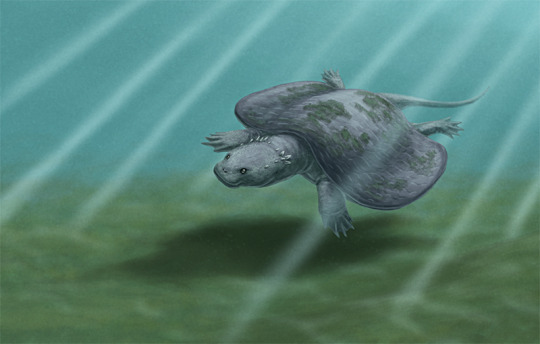
Art by Ceri Thomas
(unavailable)
7. Thylacosmilus

Art by Gabriel Ugueto
(limited access)
8. cotylorhynchus

Art by Nobu Tamura
(open access currently-june 30th 2023)
9. Erythrosuchus

Art by Mark P witton
(open access currently-june 30th 2023-)
10. Tanystropheus

Art by Zach Branigan
(payment)
That is my top 10 unusual and unique ancient life list, most of my inclusions are quite well known but of course there are a lot more than 10.
12 notes
·
View notes
Text
Dinosaur Music
There are 4 Elements to making Good Dinosaur Music. The first three to appear in film are:
Mystery
Might
Melancholy
Dinosaurs and other prehistoric animals have been with us since the dawn of cinema. Their films helped define movie music going forward (King Kong), but there are elements to them that I find interesting to look at.
King Kong, composed by Max Steiner, established a lot of what we see not just in dinosaur music, but in music in movies overall. The bombast of action movie scores, but it encapsulates the first three Ms of Dinosaur Music.
Kong's theme is a prime example of melancholy (It's three notes on a descending scale), but the real key Dinosaur piece of music is The Bronte.
youtube
After this, we get The Rite of Spring, where Stravinsky's suite of the toil of farm labor is turned to evolution and prehistory by Disney animation at the height of their powers. This defined the 'stone age' of dinosaur media music as much as Kong did.
youtube
Not much changed for decades, and those changes can best be illustrated by one of the more fanciful dinosaurs of the 1950s.
youtube
The march became the go-to style for dinosaur music to show off the might of the prehistoric monster thanks to Godzilla and friends (and Akira Ifukube).
I think the best 'typical' example from this period goes to One Million Years B.C. by Mario Nascimbene mixing marches and the toil of Rite of Spring into a pretty rousing theme.
youtube
In 1977, BBC Horizon and PBS NOVA published a documentary: "The Hot-Blooded Dinosaurs," brinring the Dinosaur renaissance to the public for the first time. While Dinosaur Music got... weird.
We got The Legend of the Dinosaurs and Monster Birds with its deeply inappropriate and funky soundtrack, the power ballad for The Last Dinosaur, and the out-there synth scored Planet of Dinosaurs.
The themes of Might, Melancholy, and Mystery are in full force, but things were changing about how they were balanced. The Melancholy began to lose its toil, and something was growing.
Jerry Goldsmith's score for Baby: Secret of the Lost Legend is the easiest to find an example of for this mid-period. It's one of his favorites and he has every right to be proud of it (even if the movie ain't that great).
youtube
The Mystery and Might gain prominence over the melancholy of everyday life. What melancholy remains goes to their loss.
Documentaries actually pick up the thread here and get proper soundtracks. Dinosaur! hosted by Christopher Reeves (1985) does not have a soundtrack release, but the Synth scores by Peter Scherer and John Holbrook captures the moment in dinosaur media quite well.
A series of documentaries hosted by Gary Owns and Eric Boardman about Dinosaurs (and other prehistoric animals) does have a soundtrack release and for a documentary, it's a pretty solid set. (Music for Dinosaurs by David Spear). It's very hard for me to pick just one track from this list. "I Need More Dinosaurs," "The Mystery of Extinction," "Rex's Late-Night Snack," "The Puzzle of Paleontology," and "Fossil Impressions" hit a lot of what I'm talking about, but they definitely lean into the Mystery aspect of them all.
I also have a soft spot for the up-beat-ness of the Son of Dinosaurs Main Title.
1989's "The Great Dinosaur Hunt" (an episode of The Infinite Voyage) had a synth/orchestral soundtrack from Jack Illar and William Loose. This was the last gasp of truly melancholic themes to the overall soundtrack of dinosaur films. Though, again, the melancholy is no longer focused not on the brutality of ancient life, but on the loss of animals the documentary itself describes as "truly magnificent."
Then in 1993, everything changed when Jurassic Park added a new "M" to the trio.
Majesty.
youtube
John William's score for Jurassic Park changed the game for dinosaur music as the film changed how dinosaurs were seen in the public eye.
After John Williams, composers like Ben Bartlett (Walking with Dinosaurs and its related follow-ups) picked up and carried the torch for dinosaurs that were not just Mysterious, Mighty, and evoke Melancholy at their loss, but were truly Majestic.
youtube
While Movie Soundtracks are now in a low form given directors keep using Premier and other editing programs to edit things to music before that music is delivered, one last truly great Dinosaur soundtrack came out. No, not from Jurassic World (though I must give props to the opening of Fallen Kingdom).
But from Prehistoric Planet.
youtube
Now, Majesty is at the forefront. No hint at the melancholy of their loss. Their might is in the backseat to their beauty and strangeness. Mystery is no longer a factor, even though there is still so much to learn. Now, they are treated like animals in the fullest sense of the documentary experience. The theme, and overall music, by Hanz Timmer, Andrew James Christie, Anze Rozeman, and Kara Talve contribute a lot to the success of the documentary. It's not just the theme people remember, but music for specific scenes. Modern movies can't even boast that.
Dinosaur have truly evolved.
#Dinosaurs#Dinosaur#Dinosaur Movies#Movies#Documentary#Documentaries#Film#Music#Music Analysis#King Kong#One Million Years B.C.#Ray Harryhausen#Willis O'Brien#The Rite of Spring#Igor Stravinsky#Godzilla#Akira Ifukubue#Mario Nascimbene#Legend of Dinosaurs & Monster Birds#Masao Yagi#The Last Dinosaur#Nancy Wilson#Kelly Lammers#John O'Verlin#Dinosaur!#The Great Dinosaur Hunt#The Infinite Voyage#Gary Owens#christopher reeve#Eric Boardman
19 notes
·
View notes
Text
Random Palaeontology Facts #1
Everyone knows the age of Dinosaurs ended with a mass extinction, but did you know it started with one too?
259 million years ago, the Great Dying killed off almost 90% of all life on the planet, with roughly 95% of marine species and 70% of terrestrial species going completely extinct.
Some notable victims include:
Trilobites (which had already been around for 270 million years and had survived two previous mass extinctions)
Eurypterids (215 million years, similar situation to Trilobites)
Acanthodians (187 million years)
Most insects (159 million years)
Anapsids excluding Procolophonids (60 million years)
Pelycosaurs (56 million years)
This mass extinction was so devastating that it took until the mid Jurassic period, 75 million years later, for biodiversity to reach pre-extinction levels.
Modern science still isn’t sure about what exactly caused it. One theory is that the formation of Pangea destroyed the habitats of most marine life and a significant portion of terrestrial life. Another is an asteroid impact more akin to the Cretaceous extinction.
However, all the rest have one thing in common. Gases such as Methane and Carbon Dioxide increasing the temperature of the planet while suffocating most Oxygen-breathing species, which have an eerie similarity to the situation we currently find ourselves in.
What’s even worse though, is that we’re doing it faster.
4 notes
·
View notes
Text
I realized today one of the main reasons why I get so heated when it comes to JP/JW fans disregarding paleobiology and especially some of the responses to Prehistoric Planet. It's because they *legitimately* are so mentally distanced from these prehistoric animals that they fucking think they're fantasy creatures. Oh, they might know that dinosaurs exist, know that they were around 65+ million years ago, but it doesn't mentally click that these were living, breathing animals. Now, when I say dinosaurs, I'm NOT including Pteranodon or other pterosaurs, nor am I including Mosasaurus which is a Mosasaur and not related to dinosaurs as closely since dinosaurs generally only refer to the land dwelling. Those are also incredibly inaccurate, but more specifics would take longer.
I'm not going to screenshot or link the comment, but it was on a Twitter post comparing some of the dinosaurs from JWD and Prehistoric Planet (I.e. Rex, Carnotaurus, Atricoraptor, etc). And someone had said something along the lines of "I don't see why it's such a big deal on how JWD presents its dinosaurs compared to Prehistoric Planet." And, it hit me.
Due to Jurassic Parks mainstream popularity, some people have taken those designs, that starting base of screen dinosaurs as *fact*. Now, were they trying to be scientifically accurate for the time period? Yes, and no. They worked with what they had, dinosaurs weren't linked to birds yet and not many feather imprints had been found. Jack Horner, the paleontologist advisor for the movies, said that Spielberg purposefully made the dinosaurs shades of grey and brown because vibrantly colored dinosaurs didn't sound scary to him. Spielberg also based the Velociraptors off of another Dromeosaur, Deinonychus, but said it should be bigger (From 6ft length to 10ft) and that they would use the name Velociraptor because it sounded scarier as a creature name. These were choices for Hollywood, not because they "didn't know any better" for the time.
Some people I’ve talked to bring up the fact that they’re not pure dinosaurs, and, again, that’d be fine if that’s what people SAW them as. Some modern amalgamation of dinosaur, lizards, frogs, and other stuff. No one talks about how Indominus Rex is the best factual dinosaur, everyone treats her as an actual hybrid. But so many people see the Jurassic Franchise as factual, which I don’t GET.
Ever since the premiere and popularity of Jurassic Park, paleontology has continued. This has led to the discoveries of several new species and aspects of Prehistoric life. Many dinosaurs had feathers, they were likely bulkier due to fat and muscle deposits not fossilizing, dinosaurs held some sort of care/tolerance for their offspring including T. Rex, and Spinosaurus likely walked on all fours due to short limbs compared to the bipedal reenactment that defeated the T. Rex in the JP series.
And these discoveries ‘ruin’ dinosaurs for people, as though these extinct creatures lived for their entertainment millions of years ago.
I’m not saying you can’t enjoy JP or JW. Hell, I like the first JP movie and the first JW movie both! A lot! What I’m saying is please stop fucking taking these creatures as your own fact and then call Prehistoric Planet a disgrace to dinosaurs just because it shows them as living, breathing creatures that didn’t have territory fights every fucking minute.
I’m tired of people saying shit like “It’s so boring, they’re just sleeping or eating in most of this”. Like, yeah, Chad. That’s what animals do. Fuck, that’s probably what YOU do a lot. It’s a documentary based on what we know, not a fucking dinosaur MMA to satisfy your need for something exciting in your boring ass life while you have a mid-life crisis.
If it’s not for you, fine, I get that. I’m not a fan of space movies. But I don’t fucking bash every single one just because it doesn’t have what I want, I’ll bash egregious plot holes. I just watch the shit I want, and if some new fact comes out, even if I don’t like it, I just go “Aight, cool”. Do I like that Carno had scaly skin? Not really, I like the thought of feathery dinosaurs. But, there’s been actual skin imprints for Carnotaurus that supported little to no feather development.
I don’t know. I’m tired, achy and angry. Rant over, I’m taking another fucking nap.
22 notes
·
View notes
Text
So randomly I thought of the Kingdom Keepers series again, which I had stopped reading after Shell Game because…well as an adult and knowing the shenanigans disney does it read like a cult and it ended up going into the banishment box alongside Skulduggery Pleasant and most of my manga (stories for another time).
And I bop onto the tag for the series on a whim to see it’s getting rewritten and…no. No this is bad it does not spark joy.
I’ve said a hundred times over how streaming is killing the archiving business, and apparently disney wants it dead too. This is 1984 bs, plain and simple.
Because for starters, the original series captures the time’s zeitgeist—from a history standpoint, this is important. Books written during certain time periods give insight into that time period because the writers were living through it and oftentimes focused on writing situations that their current readers could connect to. And with the 90s through to the 10s having things moving so fast, specific windows into that time are important. Right now I could show someone the second Jurassic Park movie and if they’re younger than me I’d probably have to pause the film to explain why Sarah Harding’s camera made that weird noise that startled the stegos (to explain: cameras used to use film, and when the end of the roll was reached it would rewind). I watched the first Die Hard with Mom again recently and when Bruce Willis made the comment about a party line I looked at Mom and said “we’d have to explain that to someone now.” (To explain: party lines were from the mid-20th century and were basically public private lines—if someone was on the phone and someone else on the party line picked up a receiver, they’d be able to hear the conversation; I know this because Mom had to explain it to me). And yet when these movies came out, they needed no explanation because people knew what those were.
Now rewrite it all and erase that, replace it with modern references that will then become dated in fifteen years. This is not a good practice, and combo’ed with disney’s habit of not showing their shows where most people can reach it and editing or undermining their work, and this goes from bad practice to absolutely terrible.
(also the one kid going from being Baptist to not? Oh no you don’t honey that’s the Bible Belt that ain’t happenin’)
#kingdom keepers#disney salt#it's a shame because I really liked the premise#the first book's original cover was shiny and that wowed tiny me#streaming is killing the archiving business and someday I'll write an article on the topic#disney is also killing the archiving business#I can get rewriting to address the consistency errors the books apparently have#but also the idea that it's being rewritten to be 'easier to read'?#please stop assuming your audience is stupid it just makes them angry#rant#vent#I spent too long in college learning critical thought and now I make it the internet's problem
10 notes
·
View notes
Text
Multituberculate Earth: Marine Reptiles

Though mammals took to the sea in this timeline, they are largely still tied to the land due to their poorly developed newborns no they aren’t; this will be reworked in the future. The seas instead took a page from the Mesozoic, and various lineages of marine reptiles still rule the waters.
In our timeline, the Cenozoic’s seas started much the same ways. Dyrosaurids and sea turtles survived the KT event, while penguins and plotopterids quickly joined in as the first warm blooded vertebrates to occupy large predatory niches, some of these birds as tall as men. They were soon joined by gharials and giant palaeophiid sea snakes in the warmer oceans of the early Eocene; with the Azolla Event cooling the seas, many of these groups became extinct, and many more diseappeared in the Grand Coupure, though the seas of the rest of the Cenozoic would still have some gharials and various types of sea turtles, not to mention the elapid sea snakes that arose in the Miocene.
In this timeline, the Azolla Event did not happen, and this not only resulted in a prolonged survival of many of these groups (at least until the Oligocene) but also added another group to the list: the choristoderes. The oceans of the Eocene quickly came to resemble a new take on the oceans of the Mesozoic, only now instead of ichthyosaurs and plesiosaurs giant choristoderes prowled the open oceans and instead of mosasaurs their palaeophiid snake relatives grew to massive sizes. The Grand Coupure did cause the extinction of many of these reptiles as global cooling distabilized oceanic habitats, but gharials, choristoderes, seabirds and sea turtles made it. While mammals quickly expanded to replace many ray-finned fishes, marine reptiles still remained (mostly) at the top of trophic webs, producing some of the most fearsome oceanic predators yet to exist.
Flightless seabirds will be eventually listed in the bird page. This one is mostly for non-avian reptiles.
Dyrosauridae
Dyrosaurids are a lineage of marine crocodylomorphs that evolved in the Late Cretaceous and survived the KT event by laying their eggs and rearing their young in freshwater habitats; this in turn allowed multiple neotenic retentions of freshwater habits, that even lead to terrestrial ecologies in some species.
Though superficially similar to gharials, they are outside of crown-Crocodylia (there is some debated if they are closely related to the fully marine metriorhynchids and other Jurassic marine crocs or if they are slightly more derived than that) and indeed differ from them in several respects, like forward facing eyes and massive limbs, acting both a flippers and a legs. Also unlike true crocodilians they are pursuit predators, not ambush hunters, and reduced their layer of osteoderms to lessen drag; marine species actually closely match the long gone metriorhynchids in terms of limb proportions, further indicating an active, powerful swimming lifestyle.
In our timeline dryosaurids died out with the mid-Eocene cooling, their extinction perhaps helping the spread of early whales. Here, they continued to live across the time period, dominating fast dolphin-like niches in tropical waters, where choristoderes and flightless seabirds were rarer. Unfortunately, the Grand Coupure still got them, their extinction paving the way for choristoderes in fast dolphin-like niches.
Chelonioidea
The “true sea turtles” as they’re the only ones to have survived into our timeline’s present, though as we will soon see they were only one of many groups of marine testudines. Having first evolved in the Cretaceous, they diversified as giants like Archelon; though they didn’t cross the KT boundary, new giants in the form of leatherback sea turtles now cross the seas.
Their diversity in this timeline isn’t much different than in our time.
Pleurodira
Other groups of sea turtles are by contrast much more fascinating. Across the Mesozoic and Cenozoic many different types of side-necked turtles took to the sea, with the bothremydids in particular attaining great diversity across the world’s oceans. Though they technically only became extinct in the Miocene, the Eocene cooling trimmed most of their diversity in our timeline, and so in this timeline they are considerably more diverse, though declining severely in the Grand Coupure.
Unlike chelonioid sea turtles, most marine pleurodires lack flippers, and so are mostly restricted to coastoal waters, occupying essentially marine versions of freshwater niches. Exceptions nonetheless exist: Rahonachelys is a genus of Eocene bothremydids with large pectoral flippers, occupying a filter-feeding niche similar to that of manta rays, while Garriya is a genus of long-necked forms with pig-nose-turtle-like semi-flippers, slowly trailing their necks among fish shoals like the long gone plesiosaurs.
Pelomedusids were less diverse than the bothremydids (at least on the sea), but survived the Grand Coupure with fewer diversity losses. In the Oligocene oceans they were the most diverse turtles, occupying the niches left by their more specialised cousins, though largely remaining as conservative shore-huggers.
Sandownidae
Sandownids are an unique clade of ancient (neither pleurodire nor cryptodire) sea turtles that first evolved in the Cretaceous, but may possibly descend from Jurassic forms, the very first turtles to take it to the sea. Most of these animals were shore huggers, but a few developed flippers and joined chelonioids and some bothremydids in the open waters.
Unfortunately, they seem to have died out entirely in the PETM, so they didn’t get to become particularly diverse in this timeline. Oops.
Choristodera
Choristoderes are an archaic linage of freshwater reptiles of uncertain affinities. They diversified as a large variety of fully aquatic species from the long necked hyphalosaurs to the lizard-like Lazarussuchus, the latter the very last choristoderes in our timeline. However, the most iconic are the long snouted, superifically crocodile-like neochoristoderes, though functionally these were essentially more like reptilian fish or river dolphins seeing as they were fully aquatic; female Champsosaurus might still have returned to land to lay eggs, but other choristoderes are known to be ovoviviparous so this was likely an odd outlier particularly in light of other adaptations like forwardly facing eyes (instead of at the top of the head like crocodilians), flipper-like limbs, pachyostotic bones, smooth skin with non-overlapping scales and nostrils at the tip of the snorkel-like snout, all indicative of a fully aquatic lifestyle.
Neochoristoderes diversified in the Paleocene, producing a variety of large sized species across both Europe and North America. They in general preferred colder waters, suggesting perhaps an endothermic metabolism, and their extinction in our timeline seems to happen soon after the PETM. Luckily, in this one they found a refugium in the Arctic Ocean: covered by layers of freshwater and with abundant prey in the form of Iqiqquq, these reptiles quickly acclimated to a fully pelagic, marine lifestyle. Salt glands gradually evolved in their tongues in conjunction with larger kidneys, while a tail fin appeared, most species relying on a mixture of tail propulsion with sealion-like aquaflight, like mosasaurs before them.
While their prey became extinct as the Arctic Ocean expanded, choristoderes were now fully ready for life at sea, quickly shifting to prey on other marine reptiles, fish and newly evolved groups of marine mammals. In the Eocene they mostly were constrained to polar or open pelagic waters as dyrosaurids and palaeophiids ruled the shallows, but as the Grand Coupure removed these tropical species they were free to expand as they pleased, their warm blooded metabolisms giving them front row seats for the audiction of new niches in these colder but nutrient richer oceans.
By the Oligocene, they include some of the largest marine vertebrates yet to exist, some predatory forms exceeding 26 meters, such sizes possible thanks to a large diversity of marine mammals and birds to prey upon. They compete with large sharks as rulers of the abyss, though several also filter feed or specialise on squids like reptilian beaked whales (though both groups are comparatively rare; no fleets of “choristodere blue whales” here, just a few whale shark wannabees). Unlike most marine vertebrates they show no nasal retraction, keeping their nostrils at the end of the snout like sperm whales, allowing them to still use their jaws as snorkels. To compensate their nostrils are forced tight by some of the strongest muscles among all know vertebrates.
Some species have since returned to freshwater habitats. These are much like their earlier Mesozoic and Cenozoic ancestors, albeit with a more streamlined profile due to their recent marine ancestors. They also occur in most continents, including areas they were previously absent from like South America and Australia. They are effectively reptilia river dolphins, though their pre-marine-stage ancestors can more or less be considered as such already.
Palaeophiidae
Palaeophiids are a lineage of snakes related to Acrochordus snakes, and indeed basal members of this group likely lived like them, albeit both in freshwater and shallow marine habitats. However, more derived species developed higher metabolisms than any other snake, and attained quite large sizes over 9 meters. They were very well on the way to becoming serpentine mosasaurs, until the Grand Coupure killed them off.
In this timeline, they also died out in the Grand Coupure as ocean environments collapsed, but the absence of whales allowed them to become much more diverse in the Eocene. Several forms transitioned into fully warm blooded animals with fish-like bodies (still without flippers, but as some sea slugs show this ain’t a problem), occupying ecological niches akin to those of early cetaceans across shallow and open oceans.
However, by far the most impressive member of this group is the relatively more conservative Eubasilosaurus. Retaining a more serpentine body plan, some of these snakes grew up to 23 meters, the clear rulers of the Eocene seas.
Other Sea Snakes
Much as in our timeline Gigantophis cruised the seas of North Africa, but it didn’t amount to much.
Gavialidae
Several extinct gharials have ocurred in marine ecosystems across the Cretaceous and Cenozoic of both timelines. Opposite to dyrosaurids, these crocodilians developed short limbs and seal-like floppy bodies, thus being less competent on land and reliant entirely on the water. Some species attained large sizes in the Eocene, up to ten meters, but afterwards they mellowed out, mostly becoming marine versions of their freshwater forms (which evolved from marine ancestors). Still, they survived the climatic tribulations of the PETM and Grand Coupure with style, and remained common components of marien faunas across tropical and subtropical seas.
I’ll be honest, gharials are the most boring of the marine reptiles. I’m sorry but its true. Maybe some fan suggestions could change my mind…
#multituberculate earth#speculative zoology#spec evo#speculative biology#speculative evolution#marine reptile#marine reptiles#turtle#turtles#choristodera#choristodere
3 notes
·
View notes
Text
Excalibur Morgana's Revenge stream starting today @ 2 EST
I'm going to begin a streamed playthrough of Excalibur: Morgana's Revenge today at 2 EST. EMR is a mod that was originally done for Marathon 1; updated for M2 and M Infinity; and rereleased for Aleph One in the mid 2000s. Thanks to a mod making guru on the Marathon official discord server, theres a working version of a modern Aleph One build that works with it. Its kind of a follow on to the Devil in a Blue Dress scenario I played through previous stream.
EMR is interesting because it takes place in several time periods (Current UESC timeframe, Jurassic Period, Arthurian Timeframe, and "Late Modern Corporate Near Future"). The portrayal of UESC timeframe though is more in line with Star Trek then the original Marathon Vibes though.
It portrays some very neat things that the marathon engine can do, and show just the absolute breadth that you can cram into a single scenario. There are some neat maps too, although alot of it is more frustrating than "good level design"; this seems to be par for the course for most M1 mods. The terminals get somewhat cringey at points. But the soundtrack slaps.
Here's some screens I took testin things out:
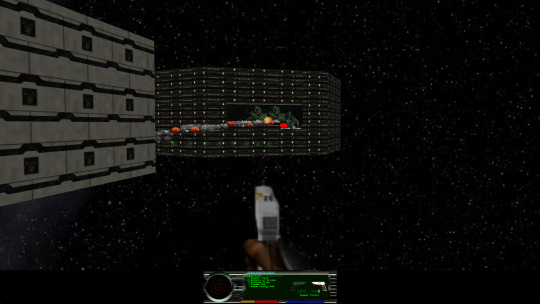
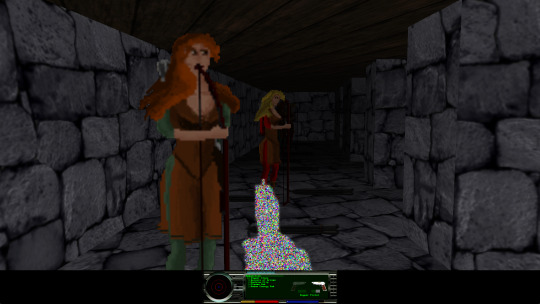
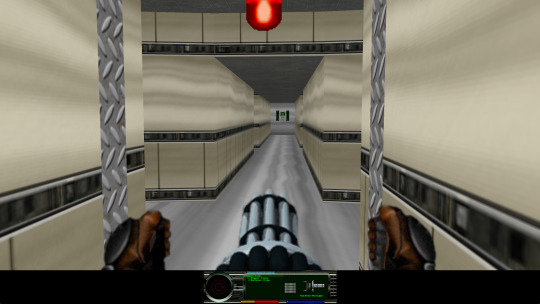
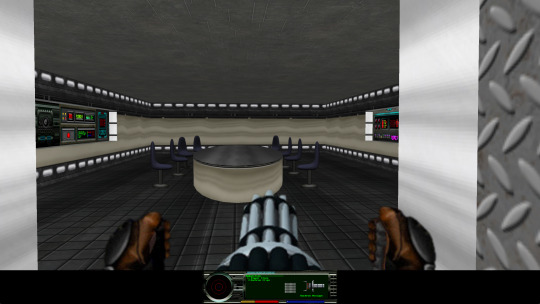
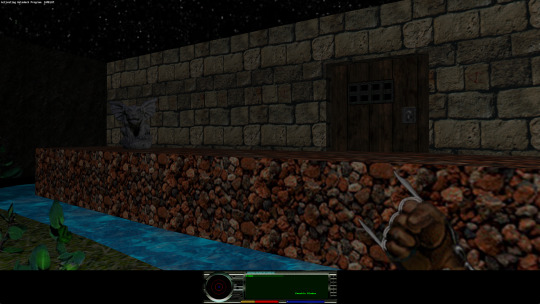

I'll start the stream round about 2 PM EST. Streaming here: https://www.twitch.tv/dyfedtheirradiatedidiot
My previous playthrough streams of marathon 1, 2, infinity, trojan, and the devil in a blue dress scenario can also be found there.
2 notes
·
View notes
Text
[ad_1]
I might be biased, but the Dorset coast is one of the best places you can visit in England, and indeed the UK. Being my childhood home, I’m ashamed to say it took me nearly thirty years to take a road trip along the entire 95-mile-long Jurassic Coast, but it was absolutely worth the wait. From pre-historic fossils to beaches so beautiful you wouldn’t believe they are in Britain, this is one of the best coastal getaways (or multi-day hikes) in the country.
The Jurassic Coast gets its name thanks to the 185 million years of history imprinted into the towering cliffs along the coastline. Long before towels and parasols dotted this coastline, Dinasaours were leaving their lasting impressions. Even now, you can occasionally still find fossils from the Jurassic and Cretaceous periods while taking a stroll along the beach. Recently, fossils from mammals dating back 145 million years were discovered.
Beyond the mind-boggling discoveries in museums, you’ll be spoiled with shimmering shorelines, proper coastal pubs, fish and chips, and ample ambling coastal trails. All in, this is a top-notch three day road trip in Dorset. Or you can bundle it together with more of the best places in South West England for a longer seaside holiday.
How to get to the Jurassic Coast
From London (or other parts of the UK) you can arrive by train to Poole, Bournemouth or Weymouth. All three are good starting points to explore the coastline. Some European airlines fly into Bournemouth and Southampton, or it’s just a few hours by coach from the main London Airports.
How to explore the Jurassic Coast
While you can see a fair bit of the Jurassic Coast using a mixture of trains and busses, not only does this quickly get costly, but it will also be harder to visit some of the most scenic spots and limit your options for times. I’d recommend hiring a car to maximise time and have a true Jurassic Coast road trip. Keep in mind that this isn’t a fully coastal-hugging road trip. You will be mainly using country roads, taking detours down lanes to reach the coastal spots.
Be warned: parking is usually not free in Dorset, so you’ll need to carry about £20 of change with you for this road trip or use the parking apps where required. For this, an eSIM might be handy if you’re travelling from abroad.
Man O’War Beach is one of many spectacular bays along the coast
Where to stay on the Jurassic Coast
Good starting points are in Poole or Bournemouth, where you can pick a car rental to begin your road trip. There is a whole host of accommodations across the Dorset and Devon coasts, ranging from small BnBs to larger chain hotels. If you are travelling as a family or group, consider booking a cottage along the Jurassic Coast. Expect prices to rocket and availability to be low during the summer months.
For a more affordable option, check out Travel Lodges (a chain in the UK), which has some hotels at the start and end of the route. You can usually save even more money by getting a Travel Lodge voucher code, as they don’t usually have rooms bookable on the major OTAs.
Weymouth is a decent mid-point break along Dorset’s Jurassic Coast
Jurassic Coast Road Trip Itinerary: Stops En Route
Swanage
After driving from either Bournemouth (my hometown) or Poole, take the Sandbanks ferry across to Studland Bay, where the Jurassic Coast official begins in Studland Bay. Your first after Studland will be Swanage. This is one of the larger towns along the coast, and the sweeping arc of shoreline is the perfect place to get your first ice cream or fish and chips lunch on the beach. Think deck chairs and quintessentially British seaside escapes, and you’ll be spot on with expectations.
Craggy coastal trails are Dorset’s signature scenery
Nearby, Chapman’s Pool Beach is one of the wilder and more secluded swimming spots along Dorset’s Jurassic Coast. This means no lifeguards and a step narrow access path, but if you don’t mind, you’ll be rewarded once you reach the waters.
Durlston Country Park and Museum
This vast 320-acre nature reserve stretches all along the Isle of Purbeck just beyond Swanage and is included in the Jurassic Coast’s UNESCO Heritage Site. There is a small museum inside the castle, but enjoying a hike along the coastal cliffs towards the lighthouses beats being inside.
Expect lots of traditional stoned houses and quaint villages along the Jurassic Coas
Corfe Castle
Take a little detour inland to visit Corfe Castle. The ruins of this fortification stand above the village of the same name, which has a handful of pubs and small tea houses, perfect for an afternoon tea with scones, cream and jam. The old defensive castle, which dates from Roman times, is one of the most popular National Trust sites in the country.
The remains of Corfe Castle, built in the 11th century by William the Conqueror
Kimmeridge Bay
This tiny fishing village is actually on private land. This means you must pay an entrance/parking fee to drive down here. The rocks stretch out into the water, and it’s one of the most popular spots to look for fossils on the beach, thanks to the continual erosion of the cliffs here. While many people do skip Kimmeridge because of the cost and it being a little bit of a detour, it is one of my favourite beautiful places to spend a few hours along the Jurrasic Coast.
The Etches Collection museum nearby houses some of the more significant and more impressive fossil findings from the bay. While it’s certainly interesting, you’ll want to factor in the £9 entrance fee and consider if you’d prefer to go to the more extensive and slightly lower-priced museum in Lyme Regis instead.
I adore Kimmeridge Bay; it’s a place of happy childhood memories
Lulworth Cove
One of the Jurrasic Coast’s most famous locations and photo spots, Lulworth Cove is the perfect place to park up and enjoy a swim on the pebble beach, followed by lunch in a traditional stone-built pub. Afterwards, take the short one-mile walk along the cliffs to Durdle Door – without a doubt, the ‘poster child’ of this region.
The limestone arch of Durdle Door is the Jurassic Coast’s Poster Child
Man O’War Beach & Durdle Door
The water at Man O’War looks more like the Med than England on a decent day, making it one of the best beach destinations in the country. This means the beaches can be crowded in summer when everyone descends to Dorset to visit one of the most famed spots on the Jurassic Coast.
Durdle Door itself, an impressive limestone arch that reaches into the sea, attracts droves of photographers. It’s not just because of its dramatic location but also because of the pretty bay backed by white cliffs. Expect to spend a good few hours here, although the crowds can be intense in Summer as it’s a popular UK staycation destination.
Man O’ War Beach is one of Dorset’s best
Isle of Portland
The Isle of Portland gained some international fame as Great Britain hosted part of the Olympics here in 2012. This was the location where many of the UK’s water adventure activities competed.
The limestone island juts out from the mainland with a spectacular arc of sand. From the top of the hill, the views are even more impressive. This is technically the most southern point of Dorset, and on a clear day, you can see for miles. There’s not much to visit in the town, so this is more of a beach and views stop.
Views from the highest point of the Isle of Portland
Abbotsbury Swannery
Did you know that the King owns all the swans in England?
Take a little detour to the Abbotsbury Swannery, and you can see hundreds of these beautiful white animals relaxing atop little lakes as you walk the shaded path. You’ll need to pay to get in, but it’s also a good place to spot various other bird life which thrives along the Jurrasic Coast.
Detour to Abbotsbury Swannery for a change from shorelines
Weymouth
One of the biggest towns in the region, Weymouth, has spruced itself up in the last few years.
It’s a pretty decent place to overnight. There’s the pretty side of the town, with cute canals and colourful houses, and then a slightly more grim centre that still needs a bit more TLC. In July, with the Weymouth Festival in full swing, the town is a cracking place to be for some sunny pints.
Weymouth is one of the largest and most lively towns on Dorset’s Jurassic Coast
Charmouth
By far the best location for fossil hunting, often people will just be walking along the beach when they spot and pick up pre-historic fossils for themselves. A little museum and gift shop will fill you in on more details about the region’s fossil history. The beach itself isn’t the best for relaxing and sunbathing. However, the impressive cliffs and chance to find your own Ammonites or Belemnites make Charmouth a must-visit.
If you want to try and find your own fossil, walk as far along Charmouth Beach as possible
Lyme Regis
In the far reaches of West Dorset, not far from the Devon border, Lyme Regis is about as dreamy as the British seaside gets. With plenty of quirky and cosy pubs, seaside cafes, relatively still swimming conditions in the bay and a host of pastel-shaded houses, it is a popular spot for UK families to have a summer getaway. Often nicknamed ‘The Pearl of Dorset’, you’ll quickly see why this is regarded as one of the stars along the Jurrasic Coast.
The famous fossil collector Mary Anning hails from Lyme Regis. Visit the geology-focused Lyme Regis Museum and the impressive fossil collection at Dinosaurland for further insight. Spend a night here before speeding back to your starting point in Dorset or continuing on to Devon’s section of the Jurassic Coast.
Lyme Regis is a perfect spot for a seaside holiday in Dorset
Seaton and on to Devon or Cornwall…
Seaton is another seaside town with a fair few amenities and your gateway to continue to Devon or even as far as Cornwall.
If you want to cover the whole of the Jurassic Coast, it stretches from Studland Bay in Dorset to Exmouth in East Devon. If you keep driving, you’ll find some other beautiful spots along this 100-mile of coastline in the park.
Whichever part of the Jurassic Coast you explore, you won’t be disappointed; just make sure not to miss my fantastic home county when planning your visit to England, as it’s truly one of the best – if slightly chillier – beach destinations in Europe.
[ad_2]
Source link
0 notes
Text
Are you ready to discover the hidden gem of Portugal and the countryside wonders with an SUVisTTa Eco-XP? 🌍
Join me for a unique and personalized experience that will take you to the Serras de Aire e Candeeiros Nature Park, a protected area with a stunning landscape of mountains and limestone caves and a rich fauna and flora. 🏞️
You can enjoy a scenic SUV tour, a relaxing walk, a thrilling cave visit, all with the guidance of your GeoGuide Extraordinaire and the support of local communities. 🚴♂️🧺🕳️🏰
You will also witness the world's largest and most important collection of sauropod dinosaur footprints from the mid Jurassic period, that measure up to 95 cm in length and 70 cm in width. 🦕
And of course, you will taste the delicious wine and food of the region, and learn about its History and traditions. 🍷🧀
Don't miss this opportunity to explore the hidden gem of Portugal and the countryside wonders in a thrilling SUVisTTa Eco-XP.
Book your SUVisTTa Eco-XP today and enjoy your adventure! 🙌
➡️ https://www SUVisTTa.pt
#SUVisTTaEcoXP #SerrasDeAireECandeeiros #Portugal #CountrysideWonders #EcoTourism
0 notes
Text

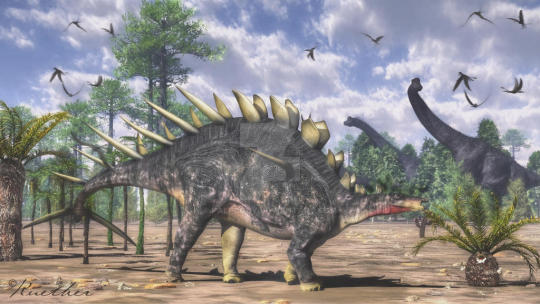

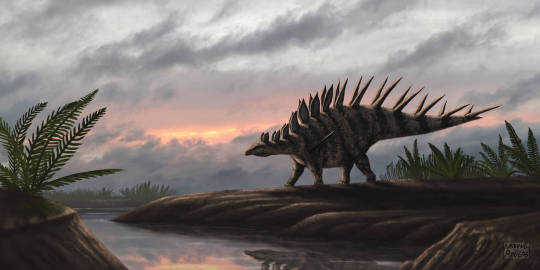

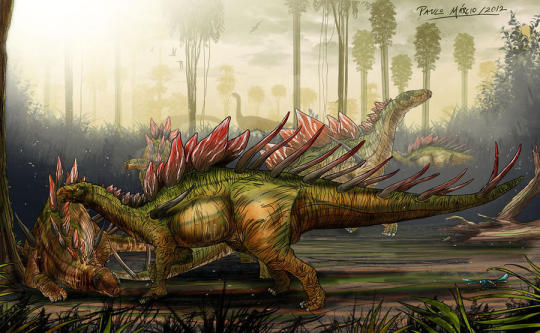
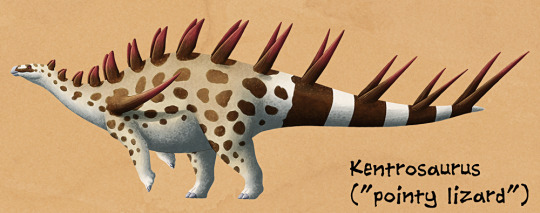
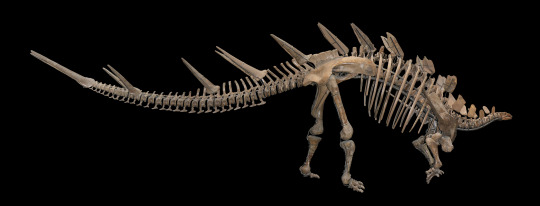

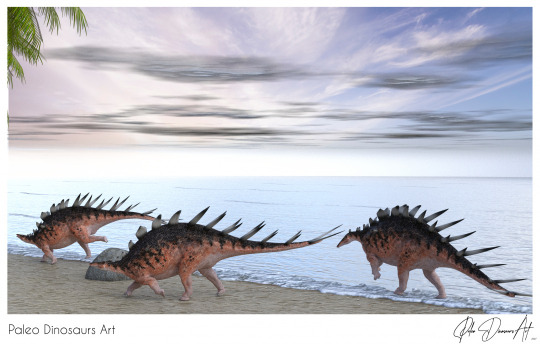
Kentrosaurus is a genus of stegosaurid dinosaur which lived throughout what is now Africa during the Kimmeridgian and Tithonian ages of the Jurassic period some 154 to 145 mya. The first fossils of Kentrosaurus consisting of the partial remains of over 50 individuals were discovered by the German Tendaguru Expedition in 1909. These remains were described by German palaeontologist Edwin Hennig in 1915, who gave them the name Kentrosaurus from the Greek kentron meaning "sharp point" or "prickle", and sauros meaning "lizard", with the specific name aethiopicus denoting the provenance from Africa in which the remains were found. As of today roughly 350 specimens have been recovered. Kentrosaurus once almost lost its name because of the ceratopsian dinosaur Centrosaurus. This gave rise to the alternate names of Kentrurosaurus and Doryphorosaurus. However not only are Kentrosaurus and Centrosaurus spelled diferently they are pronounced differently, Kentrosaurus with a ‘kicking K’, and Centrosaurus with a soft C pronounced more like an S. This is why renaming was never really required and Kentrurosaurus and Doryphorosaurus are considered synonyms. Reaching some 13- 15ft (4 -4.5m) in length and 1,500 to 3,500lbs (700 to 1,600kg) in weight, kentrosaurus is a comparatively small stegosaur characterised by a small head, a long neck, short forelimbs and long hindlimbs, and a long, horizontal and muscular tail. Said long tail of Kentrosaurus results in a position of the center of mass that is unusually far back for a quadrupedal animal, meaning kentrosaurus would have been surprisingly agile and flexible. The most impressive feature of kentrosaurus has to be its armaments consisting of a pair of long shoulder spikes and an array of plates and spikes running along both sides of the top mid-line of the animal, resulting in the animal posing a staggering 12 thagomizers. In life kentrosaurus likely lived in herds browsing upon low to mid level vegetation.
Art used can be found at the following links:
#pleistocene pride#pliestocene pride#mesozoic#jurassic#kentrosaurus#stegosaur#dinosaur#extinct#fossil
1 note
·
View note